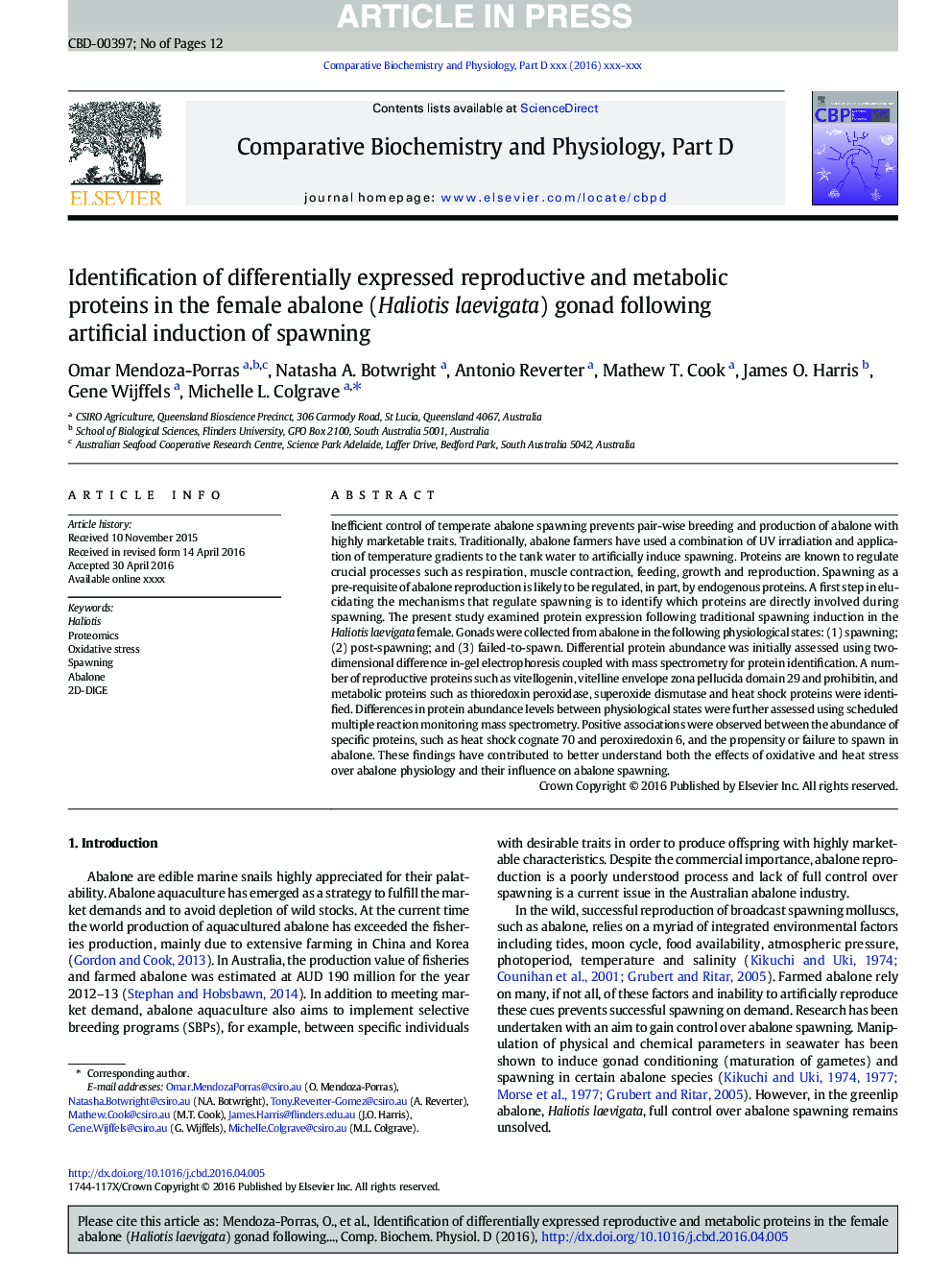| کد مقاله | کد نشریه | سال انتشار | مقاله انگلیسی | نسخه تمام متن |
|---|---|---|---|---|
| 5510700 | 1539311 | 2017 | 12 صفحه PDF | دانلود رایگان |
عنوان انگلیسی مقاله ISI
Identification of differentially expressed reproductive and metabolic proteins in the female abalone (Haliotis laevigata) gonad following artificial induction of spawning
دانلود مقاله + سفارش ترجمه
دانلود مقاله ISI انگلیسی
رایگان برای ایرانیان
کلمات کلیدی
موضوعات مرتبط
علوم زیستی و بیوفناوری
بیوشیمی، ژنتیک و زیست شناسی مولکولی
زیست شیمی
پیش نمایش صفحه اول مقاله

چکیده انگلیسی
Inefficient control of temperate abalone spawning prevents pair-wise breeding and production of abalone with highly marketable traits. Traditionally, abalone farmers have used a combination of UV irradiation and application of temperature gradients to the tank water to artificially induce spawning. Proteins are known to regulate crucial processes such as respiration, muscle contraction, feeding, growth and reproduction. Spawning as a pre-requisite of abalone reproduction is likely to be regulated, in part, by endogenous proteins. A first step in elucidating the mechanisms that regulate spawning is to identify which proteins are directly involved during spawning. The present study examined protein expression following traditional spawning induction in the Haliotis laevigata female. Gonads were collected from abalone in the following physiological states: (1) spawning; (2) post-spawning; and (3) failed-to-spawn. Differential protein abundance was initially assessed using two-dimensional difference in-gel electrophoresis coupled with mass spectrometry for protein identification. A number of reproductive proteins such as vitellogenin, vitelline envelope zona pellucida domain 29 and prohibitin, and metabolic proteins such as thioredoxin peroxidase, superoxide dismutase and heat shock proteins were identified. Differences in protein abundance levels between physiological states were further assessed using scheduled multiple reaction monitoring mass spectrometry. Positive associations were observed between the abundance of specific proteins, such as heat shock cognate 70 and peroxiredoxin 6, and the propensity or failure to spawn in abalone. These findings have contributed to better understand both the effects of oxidative and heat stress over abalone physiology and their influence on abalone spawning.
ناشر
Database: Elsevier - ScienceDirect (ساینس دایرکت)
Journal: Comparative Biochemistry and Physiology Part D: Genomics and Proteomics - Volume 24, December 2017, Pages 127-138
Journal: Comparative Biochemistry and Physiology Part D: Genomics and Proteomics - Volume 24, December 2017, Pages 127-138
نویسندگان
Omar Mendoza-Porras, Natasha A. Botwright, Antonio Reverter, Mathew T. Cook, James O. Harris, Gene Wijffels, Michelle L. Colgrave,